- Introduction
- Biometric Data and the Metaverse
- Types of Biometric Data
- Physiological Data
- Behavioral Data
- Advantages of Using Biometric Data in the Metaverse
- Personalization
- Security with Strong Authentication
- Enhanced User Experience through Increased Realism
- Easier Accessibility
- Health and Wellness
- Practical Applications of Biometric Data in the Metaverse
- Enhancing User Experience in Games and Entertainment Spaces
- Adapting Work and Educational Environments
- Increasing Accessibility for Specific Users
- Challenges of Integrating Biometric Data in the Metaverse
- Data Privacy and Security
- Technical Challenges
- User Acceptance
- Accuracy and Reliability
- Cost
- Laws and Regulations
- Solutions for Addressing Biometric Data Challenges in the Metaverse
- Strong Encryption
- Reducing Biometric Data
- Full Transparency
- User Control
- Comprehensive Laws and Regulations
- Future of Biometric Data Integration in the Metaverse
- Conclusion
Introduction
With the rapid expansion of the metaverse as an innovative digital space, companies and developers strive to provide a richer user experience. A powerful tool for achieving this goal is the use of biometric data, which can create a deeper connection between users and virtual environments. This data, which includes unique physiological and behavioral characteristics of each individual, can be used to create more realistic experiences, foster natural interactions, and ensure safer interactions in virtual worlds. Biometric data encompasses information like heart rate, eye movements, muscle activity, facial expressions, voice, fingerprints, behavioral patterns, and even users’ emotional states, which can be processed and analyzed in real time to align virtual environments precisely with users’ conditions or to uniquely identify individuals. It can also be used to understand emotions, attention levels, and physiological states. Integrating this type of data into the metaverse can bridge the gap between physical and virtual spaces, offering users a unique and personalized experience.
In the first part of this series on biometric data, we will provide a general definition, explore the types, applications, current challenges and solutions, future integration of data in the metaverse, its impact on daily life, and discuss how it can be used to enhance user experience by adapting virtual environments in real time to match users’ real-world conditions.
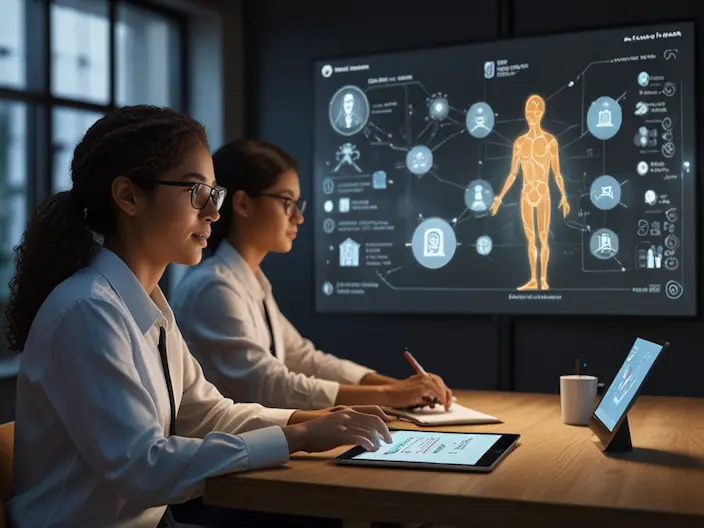
Biometric Data and the Metaverse
Biometric data consists of the unique physiological and behavioral traits of each individual, drawn from users’ physical and emotional characteristics, and can be used for identification and authentication. This data includes features like facial expressions, voice, fingerprints, iris patterns, gait patterns, and digital signatures. It can be collected through advanced sensors, cameras, and wearable devices. The metaverse, a 3D virtual space, allows users to interact, work, and play together in a combined virtual reality, augmented reality, and internet environment, immersing users in a digital world. Within the metaverse, biometric data can create a dynamic and personalized experience. For instance, if a user’s emotional state changes, the virtual environment can respond instantly, adapting to their needs and conditions. This feature enhances user engagement with the virtual environment and strengthens the sense of presence. Some practical examples include virtual fitness applications, using motion data to track exercise and provide feedback; virtual reality games, where facial data is used to generate realistic avatar responses; and virtual meetings, where voice data can improve sound quality and reduce background noise.
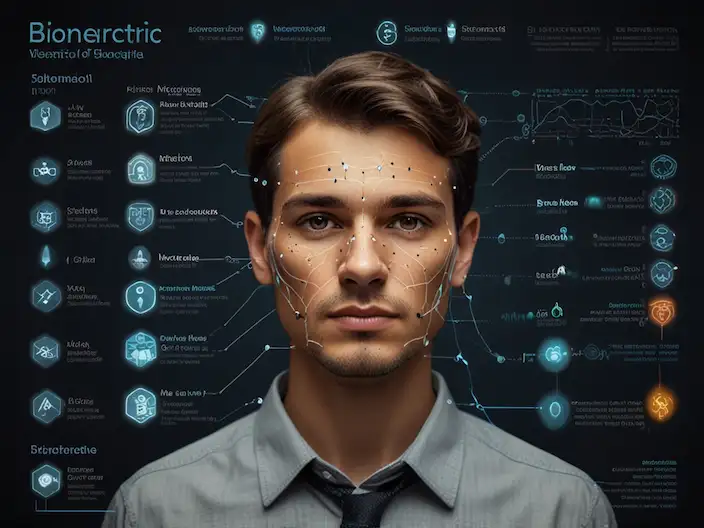
Types of Biometric Data
Physiological Data
- Facial Recognition
Creating realistic avatars, user authentication, emotion recognition, and natural interactions with virtual objects.
- Fingerprint and DNA
Secure authentication for financial transactions, access to personal information.
- Iris Patterns
Highly accurate and secure authentication, used in access control systems.
- Voice Recognition
Remote authentication, device control via voice commands, and social interactions within the metaverse.
- Gait Patterns
Remote identity recognition, analysis of movement behaviors.
- Behavioral Data
- Signature
Authentication in electronic documents, signing of smart contracts.
- Typing Patterns
Identity recognition through typing patterns, analysis of user behaviors.
- Mouse Movements
User behavior analysis, fraud detection.
- Facial Expression Patterns
Emotion recognition, analysis of social interactions.
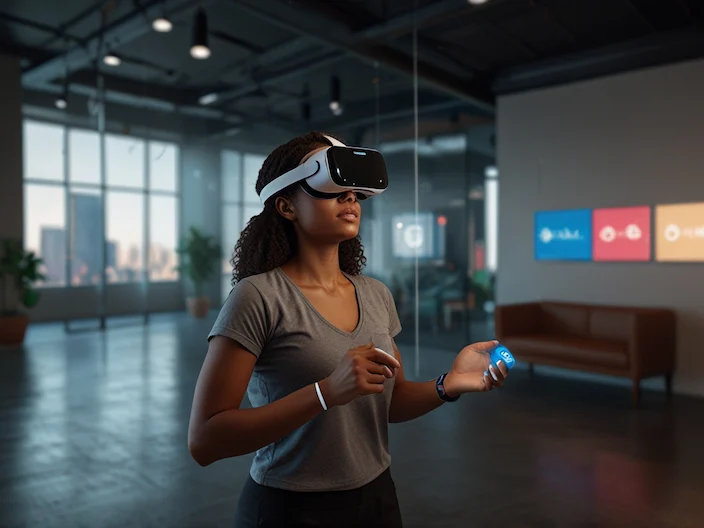
Advantages of Using Biometric Data in the Metaverse
- Personalization
By utilizing biometric data, virtual environments can be fully personalized for each user. For example, facial data can be used to create a more realistic avatar, or voice data can be used to create a personalized audio experience.
- Enhanced Security with Strong Authentication
Biometric data can provide stronger, more secure authentication to reduce identity theft and unauthorized access to user accounts. This is especially important for financial transactions or sensitive information. In identity verification, it ensures that the person claiming to be present is indeed that person; in financial transactions, it ensures secure access to sensitive information; and in preventing fraud, biometric data can help prevent the creation of fake accounts and criminal activities in the metaverse.
- Improved User Experience with Increased Realism
Biometric data enables more natural and intuitive interactions with the virtual environment. By using biometric data, user experience in the metaverse can be enhanced with more realistic appearances and behaviors, allowing for more realistic avatars and social interactions within the metaverse, bringing it closer to reality.
- Control of Virtual Objects
Using hand movements, eye movements, and voice commands allows natural interaction with virtual objects.
For example, physiological data can detect user fatigue and suggest rest periods or use motion data to enable more natural interactions with the virtual environment.
- Simplified Access
Biometric data allows users to access virtual environments easily without complex passwords or multi-step authentication methods.
- Health and Wellbeing
Monitoring users’ physiological conditions, detecting illnesses, and providing mental health feedback are among the benefits in this category. In health monitoring, physiological data can track users’ health over time. Medical professionals can provide virtual care services to patients via the metaverse, offering remote consultations and tracking their condition. Using embedded sensors in VR devices, users’ vital signs can be monitored in real time, and health-related behavioral patterns can be identified. This data allows doctors to detect illnesses in early stages and enables patients to take an active role in managing their own health.
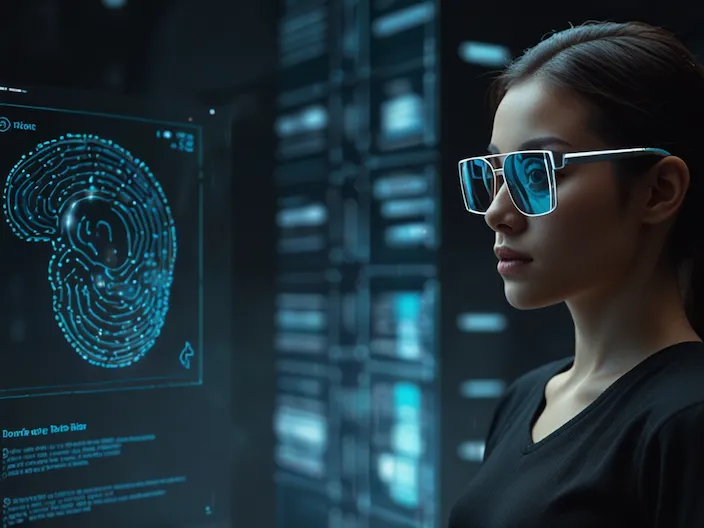
Practical Applications of Biometric Data in the Metaverse
- Enhancing User Experience in Games and Entertainment Spaces
One of the primary applications of biometric data in the metaverse is in the realm of gaming and virtual entertainment. By using heart rate sensors, it’s possible to gauge the user’s excitement and stress levels and adjust the gaming environment accordingly. For example, in action games, if the user’s heart rate increases, the game’s challenge level can decrease, or simpler paths can be created for them.
- Adapting Work and Educational Environments
In the fields of work and education, the use of biometric data can significantly improve learning and productivity. By monitoring eye movements, the system can detect the user’s focus and fatigue, suggesting appropriate break times or adjustments to educational content. Additionally, by assessing users’ physical condition, virtual workspaces can ensure their comfort and well-being.
- Increasing Accessibility for Special Needs Users
Another application of this technology is assisting individuals with physical limitations. For instance, users with mobility impairments can interact in metaverse environments using biometric data and eye-tracking movements comfortably.

Challenges of Integrating Biometric Data in the Metaverse
Alongside its advantages, integrating biometric data into the metaverse comes with challenges that require careful consideration:
- Privacy and Data Security
One of the most important challenges of using biometric data in the metaverse is preserving user privacy. Collecting and using biometric data can pose a threat to user privacy. To address this challenge, strong encryption methods are essential for protecting biometric data, and building robust security infrastructures that allow users to have control over their own data is necessary.
- Technical Challenges
Integrating biometric data in metaverse environments requires developing advanced technical infrastructures and real-time data processing. Additionally, AI and machine learning algorithms need to be capable of analyzing the data and instantly adapting environments to users’ needs.
- User Acceptance
Many users are sensitive to the collection and use of biometric data in virtual environments, which can lead to concerns and hesitation about using the metaverse. Therefore, proper information dissemination and transparency in the data collection and usage process can increase user acceptance.
- Accuracy and Reliability
The accuracy of biometric data can be affected by various environmental and physiological factors such as light, angle, and surroundings. To improve biometric data accuracy, advanced image and sound processing algorithms should be used.
- Cost
Collecting and processing biometric data can be costly. To reduce costs, low-cost hardware and software can be employed, and machine learning methods can be used to improve system efficiency.
- Laws and Regulations
Collecting, storing, and processing this sensitive data requires developing comprehensive and precise regulations to protect individuals’ rights. Informed consent, strong encryption, compliance with international laws, and organizational accountability are among the key considerations. Additionally, it should be noted that due to their unique nature, biometric data can be easily forged and used for criminal purposes if disclosed.
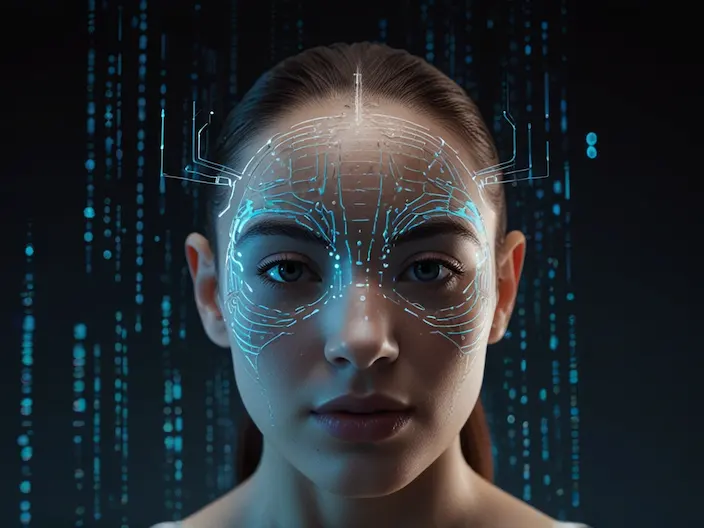
Solutions to Overcome Biometric Data Challenges in the Metaverse
- Strong Encryption
To secure biometric data, the use of advanced and up-to-date encryption algorithms is essential. These algorithms should be designed in a way that, even in case of unauthorized access, the data remains encrypted and cannot be decrypted.
- Reducing Biometric Data
Instead of storing full biometric data, mathematical patterns or feature vectors can be used. This method not only reduces data volume but also increases security, as sensitive information is less exposed.
- Complete Transparency
Users should be fully informed about how their biometric data is collected, stored, and used. This transparency can be achieved by providing clear and understandable privacy policies. Additionally, users should have the right to access, delete, or modify their data.
- User Control
Users should have full control over their biometric data. This includes choosing the types of biometric data collected, determining data retention periods, and designating who has access to this data.
- Comprehensive Laws and Regulations
Developing specific regulations to protect biometric data is essential. These regulations should include heavy penalties for privacy and data security violations, strong oversight mechanisms, and dispute resolution processes. Furthermore, these regulations should be regularly updated to keep pace with technological advancements.

Future of Biometric Data Integration in the Metaverse
In the future, the integration of biometric data into the metaverse is expected to be widely utilized, playing a significant role in enhancing user experience in the metaverse with advancements in technology and computing power. We anticipate the development of new tools and platforms, further evolution of wearable sensors, real-time data processing improvements, and the creation of highly adaptable virtual environments that enable users to enjoy more realistic and personalized experiences in the metaverse. Moreover, as AI progresses, the capability to accurately analyze user emotions and reactions will be enhanced, thereby fostering more human-like communication in the virtual space and bridging the gap with the real world.
Future Use Cases
- Health and Wellness
Monitoring users’ physiological status, diagnosing health conditions, and providing feedback on mental health.
- Education
Creating interactive and personalized educational experiences.
- E-Commerce
Offering more realistic online shopping experiences.
- Social Services
Providing virtual social services.
For example:
- Digital Identity Management
A unified digital identity based on biometric data that can be used across all online services.
- Virtual Shopping Experiences
Using biometric data to create personalized and realistic shopping experiences.
- Education
Developing virtual educational environments that are fully adapted to each student’s needs.
Conclusion
The use of biometric data in the metaverse, as an innovative approach, has the potential to revolutionize the user experience. This technology provides a dynamic and personalized experience by creating natural interactions and adapting environments to the user’s condition. However, to fully benefit from this technology and enable its widespread use, challenges such as privacy protection, data security, and user acceptance must be addressed. Although the integration of biometric data into the metaverse is in its early stages, the future is bright and filled with innovative possibilities.
Table of Contents
Toggle


One Response